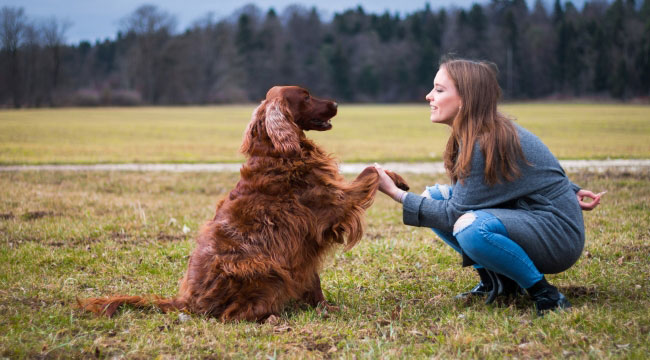
Is it time to start training your dog? Just like how students prepare for school, you must set your dog up for success in their first classes too. Training a dog is an essential part of being a successful pet owner. It can be done at virtually any age and should not be dismissed, especially in their younger years.
Whether you want to attend private dog training classes or do it yourself, training sessions are key. It builds confidence for your pet, provides mental stimulation, and strengthens the human-animal bond. Your dog never stops learning and you should never stop teaching them. There are a few simple things you should remember before training your pet for the first time.
Break Lessons Up In Short but Regular Sessions
Whether you are bringing your dog to a dog trainer or doing it at home, lessons should be broken up into short intervals so they do not take in too much information at once. Similar to humans, it takes time and patience to learn. The more consistent and patient you are with training, the more likely you are to see positive results.
Exercise Before Attending
Before you begin your training session, lightly exercise with your dog. This can be a short walk, taking them to the dog park, or playing with them. Exercising before a training session gets some of their energy out ahead of time so they are in a better position to focus on the session. However, preparing them for training with exercise beforehand can be a delicate balance. You do not want to tire your dog out entirely before a training session, as they may lack motivation to follow the lesson.
Items to Bring Before Training
Similar to going to school for the first time, your pet needs to have the tools necessary for their success before training starts. Things like the appropriate leash, collar, training button, treats, and toys. To confirm that you have the right material for your dog specifically, ask your trainer what you might need for your session. The items you will need will be dependent upon what is being covered during the lesson.
Favorite Toys and Treats
Sometimes bringing your dog’s favorite toy, or something they are comfortable with, eases their anxiety about starting training. It can also be great for positive reinforcement training. When your dog exhibits desired behavior, you can reward them with their toy.
It is also important to bring training treats to reward them. Training treats are small dog treats low in calories, making them ideal for training sessions where you may be rewarding your dog several times.
The Right Collar and Leash
The correct collar and leash will give you more control during a training session. There are many types of collars to fit all dog sizes and breeds. If your dog gets loose during training, the collar will provide identification information, such as your phone number and address.
Clicker Button
Using a “clicker” can help with positive reinforcement training. With a clicker, you can communicate with your dog by marking their desired behavior using a clicker and follow up with a reward for that behavior.
Repeat Training Regularly
The best way for your dog to be successful at training is to slowly introduce them to new commands and repeat them on a daily basis. Repetitive and consistent commands will help your dog develop a routine of desired behavior. Ask your trainer about how often you should have sessions. Outside of the sessions, practice what you learn with your dog daily.



